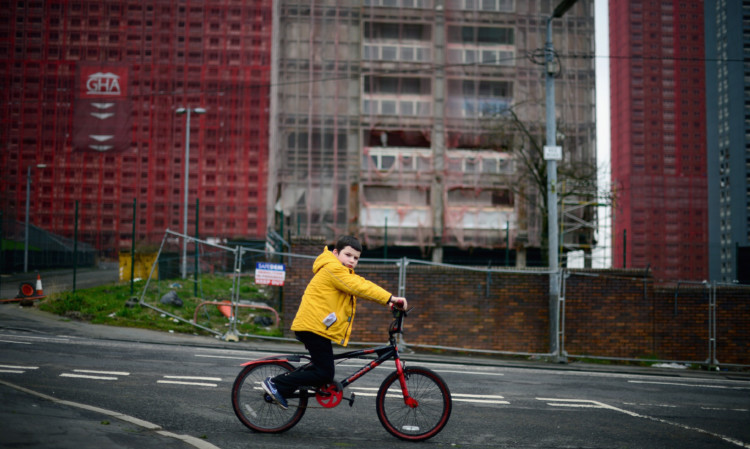
First I was undecided. Then it was Yes. Now, it’s definitely No.
Dinnae fash I’ve not changed my mind about independence.
But I have been swithering about blowing the Red Road flats to smithereens on prime-time TV before the world’s assembled press, heads of state and Commonwealth Games athletes in July.
Can such violent destruction create a feel-good focus for ‘born again’ Glasgow or will the Big Red Bang backfire?
The six notorious high-rise blocks were thrown up fast in the mid-60s now five will become rubble in 15 seconds flat as 1,250kgs of explosives create Europe’s largest ever detonation before a worldwide audience of around a billion people.
Wow.
Miles bigger than any explosion you’ve seen in yer puff it’s definitely in the gallous Glesca tradition. But is the sad demise of yet another Scottish council housing scheme really a cause for international celebration?
Hopes for the Red Road flats were high when the steel-framed towers were opened in 1966, but the Sighthill estate soon acquired a reputation for crime.
After that, flats were refurbished with better security and rubbish chutes and lifts that worked. Crime was reduced, each floor became a mini-neighbourhood and folk started to like the blocks.
But asbestos was the fatal flaw. Tenants were told not to drill holes in the walls, the flats became almost impossible to make a real home and in 2010 a family of asylum seekers jumped to their deaths from a tower rooftop.
The Red Road flats seemed cursed despite appearing in a BAFTA-winning film and a terrifying high-wire walk.
So most Scots will be happy to witness the destruction of these blocks and the substandard living conditions they’ve come to symbolise.
And yet, in the hands of the community, similar towers have been successful. Across Glasgow, in Rutherglen, local people took the brave step of buying their draughty, badly-built high-rise flats in 1989.
West Whitlawburn housed some of Scotland’s lowest paid and least educated folk. Yet they bravely went where the council feared to tread voting to jointly own 800 of the worst flats in Glasgow.
They lobbied for government cash, re-clad the blocks, improved kitchens, created community space in each block, built a health centre, installed CCTV, eliminated drug-dealing and hired a team of friendly janitors present 24 hours a day.
These chaps act fast if old folk fall or just feel lonely. As a result they’ve saved a dozen lives and countless unnecessary hospital admissions.
Now district heating is being installed to save the environment and cut fuel costs. It’s a brilliant, upbeat, cheery place which would have disappeared 25 years ago if demolition was the only game in town.
So too Glasgow’s pride and joy the stone-cleaned tenement. In the 1970s, demolition was the only solution for a housing type cursed by chronic overcrowding.
But women in Govan and Woodlands led campaigns for community-led renovation. Stone-cleaning and restoration revealed beautiful warm, red sandstone buildings and produced the largest community-led housing movement in the UK.
But now community-led housing is under threat from bean counters who think big is beautiful and local control is somehow expensive and flaky.
Maybe the asbestos-riddled flats of Red Road are beyond being saved. But so too is Glasgow’s reputation for trashing viable homes capable communities could run perfectly well.
I don’t see how the destruction of any building can be the right image for the hopeful, opening moments of the Commonwealth Games. Is it too late for the Games organisers to think again?

Enjoy the convenience of having The Sunday Post delivered as a digital ePaper straight to your smartphone, tablet or computer.
Subscribe for only £5.49 a month and enjoy all the benefits of the printed paper as a digital replica.
Subscribe